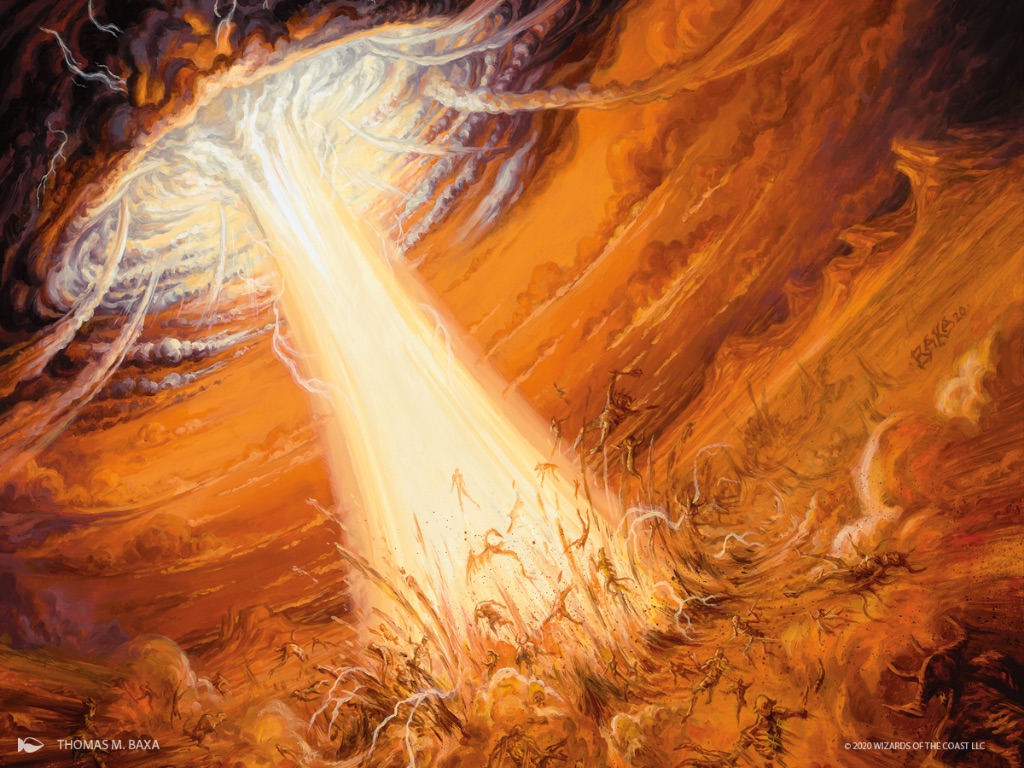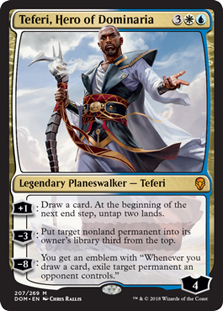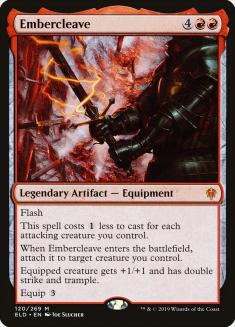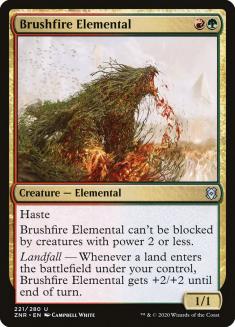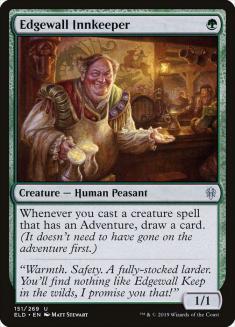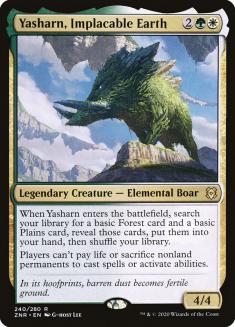Welcome to another edition of Fact or Fiction! Today, Sam Black, Michael Majors, and Paulo Vitor Damo da Rosa are here to give their takes on five statements about the Zendikar Rising Championship weekend.
1. After Brad Barclay’s win at the Zendikar Rising Championship, Azorius Control is now the deck to beat in Historic
Sam Black: Fiction. As much as control decks have to be tuned to beat a particular metagame, it’s also pretty easy to tune a deck to beat a control deck. Azorius Control didn’t do especially well overall, and while Brad had his own list, I just don’t think the cards are as strong as the competition when the competition is trying to beat them. This isn’t the first time Azorius Control has been able to attack an expected metagame in Historic, and I think the archetype is a little stronger than people give it credit for, but I don’t think it can succeed if it ever becomes a large enough portion of the format to earn the title “deck to beat.” Basically, the cards are weak enough that whenever it’s the deck to beat, people who want to can beat it. For any deck to really be the deck to beat, I think it has to be resilient enough to stand having the title.
Michael Majors: Fiction. No, I don’t think so.
Is Azorius Control a deck worthy of respect? Absolutely. But when folks that I trust, and players as incredible as Autumn Burchett are discussing the matchups of Azorius Control in their relation to some of the formats top contenders, I’m going to listen to them. Does it beat Mono-Red Goblins? I’m not exactly sure but, of course, the two copies of Grafdigger’s Cage are a nod to the matchup. But what happens if the deck doesn’t draw them or your opponents are more prepared?
Please note, I’m not trying to detract from Brad’s well deserved victory, just that metagames in wide open formats like Historic can easily evolve from week to week. It’s always difficult for control decks to remain the king for too long.
Paulo Vitor Damo da Rosa: Fiction. I believe Brad Barclay’s win with the deck is significant, but I still can’t find it in me to think Azorius Control is even a good deck in Historic, let alone the deck to beat. Every time I’ve tried to play it I’ve been disappointed, and every time I’ve played against it I’ve been unimpressed. In fact, other Azorius Control pilots had an abysmal 37% win rate throughout the tournament. It’s possible that Brad’s list was a bit better than normal, and it’s also possible he piloted the deck better than the average Azorius player, but these factors can only account for so much. I think what his win does is turn Azorius Control into a real deck when it previously wasn’t one; most people simply didn’t consider Azorius Control a contender and now people will test the deck and will test against the deck, but whether you beat Azorius Control or not is still not going to be the most important factor.
I would actually say that the deck to beat after the Zendikar Rising Championship is Sultai (or Four-Color Midrange). This archetype had six players in the Top 8 and both versions had the highest win-rates in the tournament in Historic. This might get a bit diminished since both non-Sultai pilots faced each other in the finals, but I still believe Sultai/Four-Color will be the deck to beat.
2. After its dominance at the Zendikar Rising Championship, Gruul Adventures is, once again, the deck to beat in Zendikar Rising Standard
Sam Black: Fact. Gruul Adventures has shown resilience already, and while Mono-Green Food was able to beat up on it enough to take it down a peg, Autumn showed that Gruul can be built in a way that beats Mono Green Food. I’m sympathetic to the argument from pros who play Dimir Rogues that it is actually the best deck in Zendikar Rising Standard, but I think that it’s easier to capture a higher percentage of Gruul’s equity while playing it less than perfectly than Dimir Rogues, which I think means most players win more with Gruul. At the very least, my experience on Arena after this weekend have made it seem like Gruul is still the most played deck, far ahead of Rogues.
Michael Majors: Fact. I’m happier to endorse this. Extremely strong proactive gameplan? Check. Ability to play deep games depending on the texture of the matchup? Check. Malleability based on what your opponent is presenting to you alongside an inflated land count and access to multiple maindeck answers to problematic permanents? Check. Check. Check.
This deck plays good cards, it on some level does it all, and it still has options for the metagame as it adapts. It’s extremely hard to not call this the best deck in Standard.
Paulo Vitor Damo da Rosa: Fiction. In fact, I would say that claiming Gruul Adventures dominated that tournament is already fiction — Gruul Adventures had the most 7-1 performances by a lot but also had only a 50% win rate, so while it distributed its wins optimally, it didn’t actually do that well.
I don’t think win rates in one particular tournament necessarily mean much, so I’m fully prepared to accept that Gruul might be the best deck in Standard, but best in my mind is different than deck to beat. To me, being the deck to beat means you’re so much better and so much more popular than everything else that any deck that is bad versus you is automatically discarded, and that everyone will be tweaking their decks to be as good as possible versus you. The current Standard environment is very far from that; even if we accept that Gruul Adventures is the best, that likely means it’s 53% against the field while there are a bunch of decks that are 52% right after it.
3. Dimir Control in Zendikar Rising Standard should play 80 cards and Yorion, Sky Nomad as its companion instead of simply 60 cards.
Sam Black: Fiction. I’m not an expert, on the archetype; I’ve tried my hand at building decks like this, but I really struggle at building hard control decks. But given the cards available, I think the gap in power level between the first 60 cards you’re including and the next twenty you’d have to play to include Yorion is fairly small, and Yorion adds a lot of power to a control deck. If this were Best-of-One, I’d be sure Yorion is the right way to build it, however, I don’t think that’s the case in Best-of-Three because Dimir has to play a lot of relatively narrow cards, which means sideboarding is extremely important to the archetype.
I believe I’ve played successful Dimir Control decks that lost Game 1 against most opponents in the past. If you believe the metagame is narrow enough that you can find a maindeck you’re comfortable with not being able to change much, I think playing Yorion sounds pretty good, but I think Dimir is at its strongest when it can take the most advantage of its cheap but narrow interaction, an area where blue and black tend to specialize compared to white, for example, which has more well-rounded answers.
Michael Majors: Fact. If you aren’t trying to play Yorion, then how can you hope to compete on power? It’s already been well established that these aggressive decks can operate under normal conditions as well as play long contests, so why would your generic stack of removal, card draw, and finishers operate under a better axis then including some synergies with Omens and including a pseudo-free additional piece of cardboard (that often generates many more!). This just seems silly to me.
Take advantage of the engines that are available to you. Control strategies more than any else should want to leverage Yorion.
Paulo Vitor Damo da Rosa: Fact. I think that the biggest difference here is the Dimir Rogues matchup; when I play versus the 60-card version of the deck, I feel that it’s a very easy matchup, and when I play versus the 80-card version it feels significantly tougher. This is both because decking them becomes much harder once they have twenty more cards and also because the additional cards that you get to play because of Yorion are very good versus Rogues (such as Elspeth’s Nightmare).
I don’t think the decks are meaningfully different outside of this matchup, and given that I think this matchup improves significantly, I think the 80-card version is the best one.
4. Four-Color Midrange splashing for Yasharn, Implacable Earth is better than Sultai Midrange without Yasharn in Historic.
Sam Black: Fiction. The point that Ari made in his article this week seems compelling to me, that Yasharn was the better choice for players this weekend due to the popularity of Sacrifice decks in that event, but because Sacrifice decks did poorly while other Uro decks and Azorius Control did well, splashing for Yasharn is likely not worth it moving forward in the short term. The real reason I answered Fiction isn’t exactly that the three-color version is better as much as that I think it’s close and will vary with the metagame, so the affirmative statement that the four-color deck is better is incorrect.
Michael Majors: Unclear. Every time that I look at Four-Color Midrange, my stomach turns. A bunch of additional tap lands, some crappy basics to “hope” to turn on Yasharn, and at best some additional sideboard cards with the hope of maximizing a four-mana (!) card in a matchup that you’re likely favored in anyways?
Look, it just doesn’t add up, but extremely talented folks keep doing it.
My caution to those out there would be to consider the strengths and weaknesses of your deck as you perceive them against the metagame you seem to be running up against. Don’t make assumptions simply based on the decklists that crop up. This one strikes me as odd, but in certain metagames, splashing for Yasharn can make a lot of sense.
Paulo Vitor Damo da Rosa: Fact. This is tough to judge, because it really is going to depend on the metagame you expect and it could change from week to week. Before the Zendikar Rising Championship, I felt confident the Yasharn version was better, as I felt it gained much against Sacrifice decks and random decks like the Mystic Forge combo deck or Neostorm while not losing much in the other matchups. Sacrifice decks (both Jund and Rakdos) being 30% of the field seems to have validated this choice. However, Sultai and Four-Color Midrange builds were the best performing decks in the tournament, and that’s the one matchup where I feel the straight three-color version is meaningfully ahead. So, if there was ever a time to play Sultai over Four-Color Midrange, this would be it. Even then, I think Four-Color Midrange is a little bit better overall, but this could change at a moment’s notice if certain decks become more or less popular (for example if Brad Barclay’s Azorius deck becomes more popular then naturally Sultai will become a better choice).
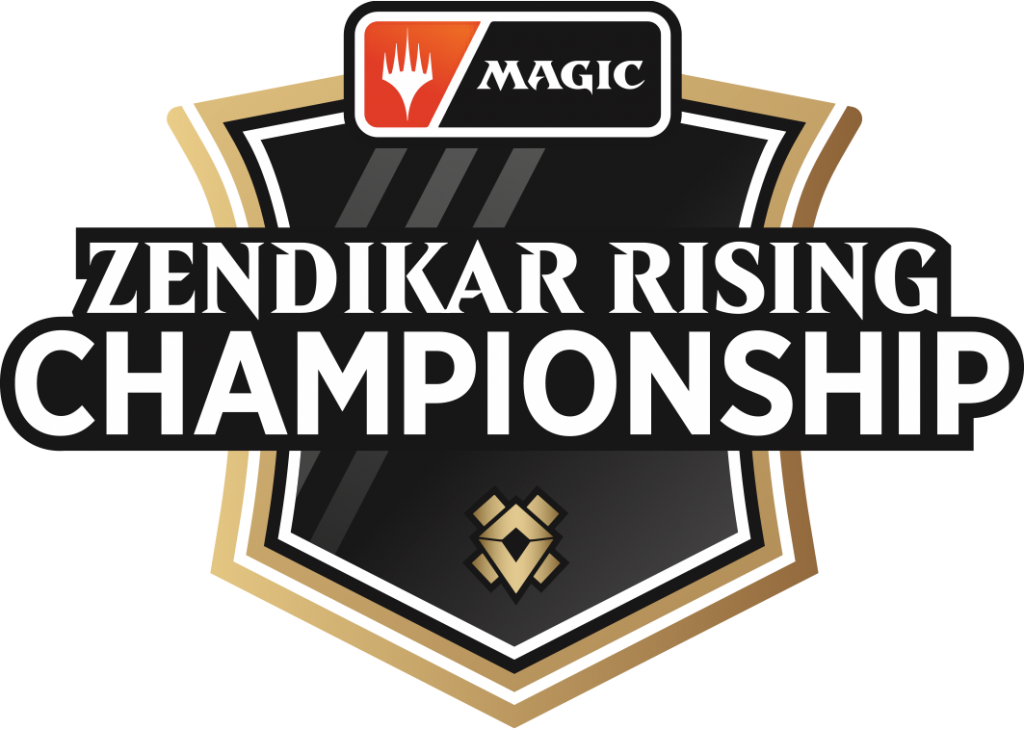
5. The Zendikar Rising Championship felt like a Pro Tour level event.
Sam Black: Fact. It’s easy for me to feel bitter about the changes that have happened to organized play since the creation of the MPL as someone who was left just outside of it and was personally pushed out of professional play by the changes, and then further as someone who loves paper Magic and doesn’t find competition online especially compelling or motivating. However, watching the broadcast, the production, and quality of play definitely felt much more like watching a Pro Tour than it felt like watching anything else to me. So while I’m not sure how similar I think the experience would feel as a competitor, from my perspective as a viewer, it hit similarly.
Michael Majors: Fiction. I don’t know if I should nitpick this.
Surely you don’t mean it felt like an event where I get to see all of my friends despite whatever countries they’re from and engage in incredible hangs, drafts, drinks, and everything that made “play the game, see the world” seem so alluring and magical in the first place.
The competition? It’s hard to speak on a macro level but I’m sure it was rich. Competitive folks are really good at Magic in the aggregate, yet many of the same names keep rising to the top. If you don’t respect Autumn’s game, then you simply haven’t watched coverage in past year because they’re incredible. Brad Barclay taking down the event is something to be celebrated, and competing at Magic’s highest level is something that feels progressively harder rather than easier.
Did it feel like a Pro Tour? Doubtful. Did it express the hard work, tenacity, and talent of its’ participants? Absolutely.
Paulo Vitor Damo da Rosa: Fact. I think the Zendikar Rising Championship felt like a Pro Tour in a way that previous online tournaments hadn’t because it was actually inserted in the professional scene — players were either acquiring points towards their status at the end of the season (in the case of MPL / Rivals) or were acquiring qualifications for other Championships and the Gauntlets (in the case of the challengers), so this gave this tournament a sense of continuity that didn’t exist before; it’s not a single random tournament but part of the entire season. The Grand Finals, for example, was a great tournament, but it simply wasn’t part of the professional scene in any capacity — you could have won that tournament and not gotten any closer to any goal other than winning the tournament itself and several people who did well there are not even qualified to the next Championship.
Obviously there were many things that were different from a regular Pro Tour, the most glaring one being the fact that it was online, but also the fact that the equivalent to Silver Level pros were absent. In a Pro Tour, you often have an entire spectrum of people who built up a yearly resume to get there, whereas for this tournament this didn’t happen; you were either qualified for everything (Rivals + MPL) or you won a pin-pointed qualification for this tournament, which was a bit different and meant several Pro Tour fixtures weren’t there. Regardless, I treated this tournament as I would treat a Pro Tour in most aspects and I basically referred to it as the “Zendikar PT” the entire time.

